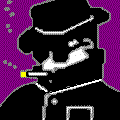





 INTERNAL SECURITY TROOPS
INTERNAL SECURITY TROOPSThe government of the Soviet Union had several bodies of troops under its control for the purpose of ensuring internal security. These troops included the Border Troops and Security Troops of the KGB and the Internal Troops of the MVD.
The Border Troops, distinguishable by green piping on their uniforms, were organized under the KGB's unnumbered Border Troops Directorate, which was headed in 1989 by Army General Viktor Matrosov. He was assisted by one or more first deputy chiefs, several deputy chiefs, and a chief of staff. Within the directorate, a political administration provided political indoctrination and surveillance on behalf of the party. Western specialists reported that there was an intelligence administration within the Border Troops Directorate, but this had not been confirmed by Soviet sources.
The Border Troops strength was estimated in 1989 to be in the range of 230,000 men, down from the estimated 300,000 personnel in the early 1970s. Although under the operational authority of the KGB, the Border Troops were conscripted as part of the biannual call-up of the Ministry of Defense, and their induction and discharge were regulated by the 1967 Law on Universal Military Service, which covered all armed forces of the Soviet Union.
The legal status, duties, and rights of the Border Troops were set forth in the Law on the State Border, confirmed by the Supreme Soviet on November 24, 1982. Article 28 defined the basic duties of the Border Troops. Their duties included repulsing armed incursions into Soviet territory; preventing illegal crossings of the border or the transport of weapons, explosives, contraband, or subversive literature across the border; monitoring the observance of established procedures at border crossing points; monitoring the observance by Soviet and foreign ships of navigation procedures in Soviet territorial waters; and assisting state agencies in the preservation of natural resources and the protection of the environment from pollution. Border guards were authorized to examine documents and possessions of persons crossing the borders and to confiscate articles; to conduct inquiries in cases of violations of the state border; and to take such actions as arrest, search, and interrogation of individuals suspected of border violations.
The Border Troops Directorate administered approximately nine border districts (pogranichnye okruga), which covered the nearly 63,000 kilometers of the state border. Border district boundaries were distinct from civil or military district boundaries. The nine border districts were subdivided into detachments (otriady), covering specific sections of the border, border command posts (pogranichnye komendatury), passport control points (kontrol'no-propusknye punkty), and border outposts (zastavy). The border area was divided into a border zone, which included the territory of the district and settlements adjacent to the state border, and the border strip, which was approximately two kilometers in depth, running directly along the border. Only permanent residents or those who had obtained special permission from the MVD could enter the border zone. Entry into the border strip was forbidden without special permission from the Border Troops.
Soviet sources repeatedly stressed that a border guard was not only a soldier but also a defender of Soviet ideology. His mission entailed sensitive political tasks, such as detecting subversive literature, and shooting citizens attempting to escape across the border. Enlisted men were trained with their operational units, whereas officers were trained in special Border Troops schools, such as the Dzerzhinskii Higher Border Command School and the Higher Border School in Moscow. Military-political officers received training at the Voroshilov Higher Border Military Political Academy, founded in the 1930s and located outside Leningrad. In 1972 a higher border military-political school was created in Golytsin, near Moscow. More recently, higher border command faculties were set up at the Frunze Military Academy and the Lenin Military-Political Academy. The period of instruction at the Dzerzhinskii Higher Border Command School was four years. Officer candidates, who were screened carefully by their local KGB offices before admittance, took general higher education courses along with specialized military and political studies.
To ensure a high level of discipline among personnel of the Border Troops, much attention was devoted to political training and indoctrination. For this purpose, a network of political organs, the Political Directorate of the Border Troops, was established within the Border Troops. It had political departments within all the border districts, detachments, and education institutions, and a network of full-time party political officers worked among all troop units. They conducted political study groups, gave propaganda lectures, and worked to increase the level of combat effectiveness among the troops.
